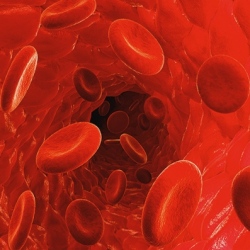
Stanford University School of Medicine scientists have developed new paper and flexible polymer substrates with special sensing devices for rapid and accurate detection of pathogens such as HIV, various bacteria, and CD4+ T lymphocytes.
These novel technologies offer the type of robust, simple, and inexpensive biosensing systems required to provide point-of-care health care in remote areas, where there is minimal diagnostic infrastructure or equipment and a lack of trained medical technicians.
Testing for HIV-1 in whole blood
Current tests for HIV infection detect antibodies to HIV in the individual’s blood but it takes up to several months for those antibodies to form, so those tests do not detect individuals in the earliest stage of infection when they are most likely to pass on the disease. To detect HIV-1 in recently infected individuals, the researchers developed a disposable flexible polyester chip with implanted electrodes.
HIV-1 antibodies are added to whole blood or plasma where they bind to the virus creating aggregates of antibody and viral lysate. When added to the flexible chip, the aggregates change the electrical conductivity of the chip, which gives a simple electrical readout indicating that the sample contains HIV-1.
In addition to detecting early stage infection, the electrical readout is much simpler and less expensive than current assays. The researchers estimate that the cost is about $2 per test and can be safely disposed of after use.
CD4+ T Lymphocyte capture and detection
Accurate CD4+ T cell count is essential for HIV-1 diagnosis and treatment monitoring. World Health Organization guidelines recommend antiretroviral therapy for individuals with a CD4+ T cell count of less than 500 cells/ml.
Conventional CD4+ T cell counting methods require an expensive flow cytometer, a skilled operator, and costly reagents. The research team developed a simple, inexpensive assay for CD4+ T cell count using two novel technologies: a polyester film with microfluidic channels to capture the T cells, and a detection technology known as lensless shadow imaging.
